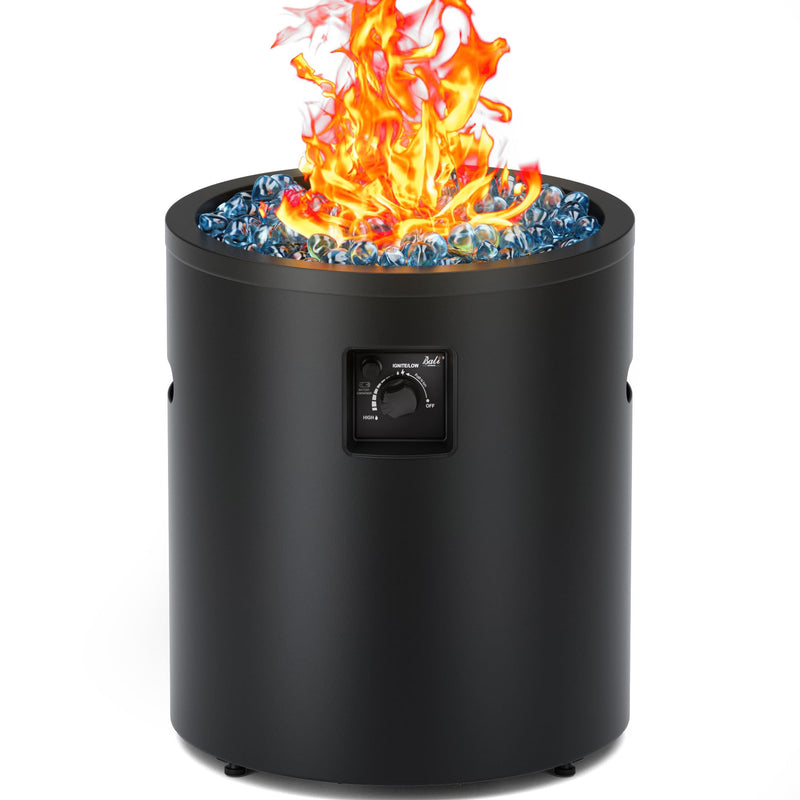Discover the Ultimate Fire Pit: Ignite Your Cozy Nights!
Fire pits have become a staple in outdoor living, transforming backyards into inviting spaces for gatherings with family and friends. The flickering flames not only provide warmth but also create a cozy ambiance that encourages storytelling and laughter under the stars. Whether it’s roasting marshmallows or simply enjoying a glass of wine, a fire pit elevates any outdoor experience. In this article, we will explore and compare different types of fire pits, helping potential buyers make an informed decision that best suits their needs and lifestyle.

Understanding Fire Pits: Types and Features
When diving into the world of fire pits, it’s essential to understand the various types available on the market. The three primary types of fire pits are wood-burning, gas, and propane. Each type has its unique characteristics and benefits. Wood-burning fire pits are traditional and provide that classic campfire feel, but they require more maintenance and can produce smoke. In contrast, gas fire pits are convenient and cleaner, igniting with the push of a button and allowing for precise flame control. However, they may lack the authentic experience of a wood fire. Propane fire pits are similar to gas but are portable and ideal for those who desire flexibility in their outdoor setup.
Key features to consider when selecting a fire pit include size, material, portability, and design. A larger fire pit can accommodate more people but takes up more space, while smaller models are perfect for intimate gatherings. Materials such as steel, stone, or cast iron offer different aesthetics and durability levels. Portability is crucial for those who may want to move their fire pit around or take it on camping trips, while design should complement your outdoor decor. Weighing the pros and cons of each option will help you determine the best fit for your outdoor space.
Safety Considerations When Using Fire Pits
Safety is paramount when enjoying a fire pit. Proper placement of the fire pit is critical; it should be situated away from flammable materials, structures, and low-hanging branches. Additionally, having fire safety equipment nearby, such as a fire extinguisher or a bucket of water, can prevent any accidents from spiraling out of control. Understanding local regulations regarding fire pits is also essential, as some areas have restrictions on open flames due to fire hazards.
To ensure a safe fire pit experience, always supervise the fire, especially around children and pets. It’s wise to establish a designated area where everyone can enjoy the fire while maintaining a safe distance. When the evening winds pick up, be cautious about how the flames behave and be prepared to extinguish the fire if necessary. Following these safety tips will help you create a worry-free environment for your outdoor gatherings.
Choosing the Right Fire Pit for Your Needs
Selecting the perfect fire pit involves considering your individual preferences and needs. Reflect on the available space in your yard; a large, permanent fire pit might not suit a small patio, while a portable option could be perfect for a compact area. Think about how you intend to use the fire pit: will it be primarily for heating, cooking, or simply creating a cozy atmosphere? For instance, if cooking is your primary goal, a fire pit with a grill grate would be beneficial.
Aesthetics also play a crucial role in your decision. You want a fire pit that complements your outdoor décor and enhances the overall look of your space. To help you evaluate your options, consider creating a checklist that includes size, type, intended use, and design preferences. This will guide you in narrowing down the choices and making a purchase that aligns with your lifestyle and outdoor activities.
Maintenance and Care for Fire Pits
Regular maintenance is essential for keeping your fire pit in good condition and ensuring safety. After each use, make it a habit to clean out the ash and debris, as this can affect airflow and the fire's efficiency. For wood-burning fire pits, a thorough cleaning once a season is advisable, while gas and propane models require regular checks for leaks and cleaning of burners.
Seasonal storage is another crucial aspect of fire pit care. If you live in an area with harsh winters, consider covering your fire pit or storing it inside to protect it from the elements. Using a weather-resistant cover can also prevent rust and damage from rain or snow. Additionally, consider applying a protective sealant to metal fire pits to extend their lifespan. By taking these maintenance steps, you can enjoy your fire pit for years to come.
Enhancing Your Outdoor Experience with a Fire Pit
In conclusion, a fire pit can significantly enhance your outdoor living space, creating warm and inviting environments perfect for gatherings and relaxation. By understanding the various types of fire pits, prioritizing safety, and selecting one that suits your needs, you can make an informed decision. Remember to maintain your fire pit properly to ensure longevity and enjoyment. With the right fire pit, you can ignite cozy nights filled with laughter and cherished memories.







